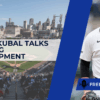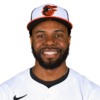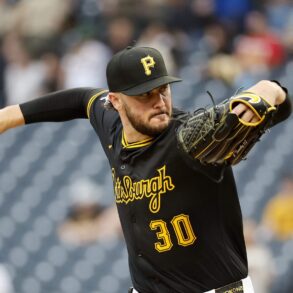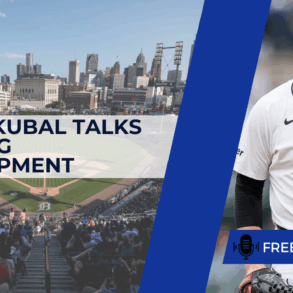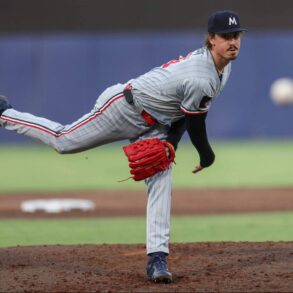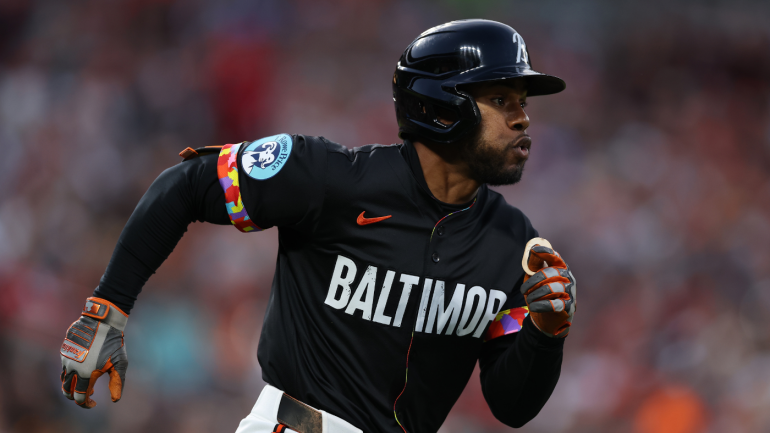
If you’ve read any of Peter Gammons’ old columns, you’ve likely stumbled across a sentiment he credited at times to both longtime Athletics executive Billy Beane and World Series-winning manager Chuck Tanner. It goes something like this: the first two months of the regular season are for figuring out what you have; the next two are for getting what you need; and the last two are for making a run.
It’s short, it’s sweet, and, crucially, it’s still true. So much about baseball has changed in the past few decades, on and off the field, yet the calendar’s drumbeat remains true in this instance. When I checked my notes from last summer, I noticed that the first time I was told a team was open for business was roughly two months into the year. Do you know what today is? That’s right.
Below, I’ve offered an early preview of the trade deadline. You’ll find sections highlighting the three most interesting buyers, sellers, and bubble teams, as well as a breakdown of 10 notable trade candidates. The one caveat I’ll offer is that a lot can change between now and the July 31 deadline — almost two-thirds of the league enters Tuesday within three games of a playoff spot — so don’t be surprised when the next few weeks of ball hammer the market into a more defined shape.
The buyers
I must admit that I was wrong about the Tigers. Coming into the season, I felt they had a real chance of missing the playoffs after an offseason that felt too lackadaisical for my tastes following last year’s strong finish. Instead, Detroit should sail into the mad season in a position of strength. Credit to them for seeing their roster in a better light than I did. They were clearly right.
How hard will the Tigers push at the deadline? That’s to be seen. As things stand, I would expect them to maintain an open mind about offensive upgrades. They haven’t received much mileage from outfielders Justyn-Henry Malloy and Akil Baddoo (in a small sample), and I don’t believe they can count on Zach McKinstry to regain his April form. In a more perfect world, they’d find a better shortstop option than Trey Sweeney. It’s unclear if the market will contain such a player.
What’s more certain is that the Tigers have some interesting prospects to build trades around if they want to make a splash. I doubt they’d move either outfielder Max Clark or infielder Kevin McGonigle, both top-50 prospects in my evaluation. Ditto for young shortstop Bryce Rainer, whom they drafted 11th overall last summer. I do wonder if they’d consider dealing one of their young backstops (Thayron Liranzo, Josue Briceño) or even shedding a piece of infield depth from the upper parts of their system — someone like Jace Jung, perhaps?
So yes, this isn’t what I thought would be the case two months from the deadline, but the Tigers look like the most interesting buyer in the land.
Let’s be serious: the die was cast long ago on the Phillies being in the market for relief help ahead of the deadline. Closer José Alvarado’s 80-game suspension over a failed performance-enhancing drug test just added extra motivation to make some additions. The Phillies could stand to survey the outfield market, too, what with their current crop (Max Kepler, Johan Rojas, Nick Castellanos, and Brandon Marsh) all checking in with below league-average offense on the year.
The Mariners haven’t won a division title since 2001. On paper, anyway, they have a golden opportunity to change that this season. They also have an embarrassment of prospect riches, giving them the ability to add impact-caliber talent wherever they want. At the same time, they’ve largely shied away from making blockbuster deals in recent years (the Luis Castillo trade being an exception), making it tough to know if Seattle will rise to the moment this summer. That combination of factors is why I consider the Mariners to be a more interesting buyer than the New York Yankees, Los Angeles Dodgers, and the other obvious big-market behemoths.
The sellers
When I asked one talent evaluator if they thought a certain Marlins player would be traded this summer, they responded by saying: “I think [general manager Peter Bendix] would move his own mother if a club offered the right combination of athletic 17-year-olds.”
The freewheeling dealer perception of Bendix stems from how quickly he’s turned over the roster he inherited after Miami’s fluke playoff run in 2023. He’s since bid adieu to most of that team’s top performers, including lefty Jesús Luzardo and infielder Luis Arraez. There is one notable holdover from that club, right-hander Sandy Alcantara, who figures to be the main person of interest here. Alcantara has scuffled in his return from Tommy John surgery, creating an interesting conflict: will teams believe his performance will stabilize sooner than later, and if they do, are they confident enough in that stance to dissuade Bendix from feeling that he’s selling low on his ace?
Elsewhere, the Marlins have some tough decisions to make. Outfielders Dane Myers and Kyle Stowers have performed well and could intrigue contenders, but it’s unclear how their remaining team control will be valued given they’re already in their late 20s. Another wild card to watch is left-hander Ryan Weathers. He’s shown improved stuff and velocity in a small sample. Do the Marlins think he’s established a new baseline of performance? Do other teams?
Provided that aforementioned rival executive is correct, this could be an interesting time in Miami.
You never know what the Rockies are (or aren’t) going to do at the deadline. There’ve been times in the recent past where they’ve stood pat, or elected to ink an obvious trade candidate to an extension. Even so, I have to believe their historically poor on-field showing will shock the front office into overhauling the roster. At minimum, that ought to entail finally moving veteran infielder Ryan McMahon and striking while the iron is hot on reliever Jake Bird.
With apologies to other sellers, like the Chicago White Sox, I think the Pirates could have an interesting deadline — and no, I don’t envision them entertaining a Paul Skenes trade. Impending free agents Andrew Heaney and shortstop Isiah Kiner-Falefa are logical candidates to go, and it would only make sense to explore the market for relievers David Bednar and Dennis Santana. If the Pirates really want to get bold, how about shopping catcher Joey Bart? He was a savvy addition last April, but he’s already in his late 20s and the Pirates could use the rest of the season to figure out what they have in young backstops Endy Rodríguez and Henry Davis.
The bubble teams
Whenever a season strays as far from expectations as the Orioles have this season, it’s worth wondering about the potential for wholesale changes. Baltimore has already fired manager Brandon Hyde without experiencing so much as a dead bird bounce. You never want to write off a team too early, but what else can you do when a team plays at a 110-loss pace through two months?
What does that mean for the deadline? It could be that executive Mike Elias focuses exclusively on moving some impending free agents. Think starter Zach Eflin, reliever Seranthony Domínguez, and outfielder Cedric Mullins. First baseman Ryan Mountcastle, still a year away from free agency, would be another obvious player to move, presuming his down season hasn’t scared off potential suitors. Maybe Elias would consider trying to sell high on outfielder Ramón Laureano, too. (For everything that has gone wrong this season in Baltimore, the O’s look wise to have tacked on a club option to his contract when they signed him to a one-year deal over the winter.)
The reason I have the Orioles as a bubble team is that I’m not how far Elias will veer into sell mode. Just the expiring contracts? Fair enough. Something bigger and bolder? There are some interesting possibilities to explore that path, turning this challenging season into a transformative opportunity.
The Rangers found themselves in a similar predicament last year, fresh off a World Series victory, when they entered July’s final days a few games under .500. At the time, the question was if they would trade impending free-agent starters Nathan Eovaldi and Max Scherzer, or hold tight and hope for a late run. They mostly held, trading starter Michael Lorenzen while adding a few role players to their roster (catcher Carson Kelly and lefty Andrew Chafin). If Texas’ trajectory stays true, right-hander Tyler Mahle figures to become a person of interest. Mahle is a skilled contact manager in the midst of a great year, even if his inability to miss bats might limit his return.
The Rays were also in this spot a year ago. Unlike the Rangers, they cashed out by trading Randy Arozarena, Zach Eflin, Isaac Paredes, Jason Adam, and more. Will they do the same this cycle? They have the pieces to do it if they want. First baseman Yandy Díaz, shortstop Ha-Seong Kim (yet to make his season debut after undergoing shoulder surgery last fall), reliever Pete Fairbanks, catcher Danny Jansen, starter Zack Littell, and second baseman Brandon Lowe are all either in their walk years or in their penultimate seasons of team control. While there’s no guarantee the Rays would move all of those players, there is precedent to suggest they’d consider it.
Players worth monitoring
1. Ryan McMahon, 3B, Colorado Rockies
McMahon has two years remaining on his contract, but the lowly Rockies could use the talent infusion they’d gain from moving him sooner than later. He’s a plus defender and a steady (if strikeout prone) hitter who has posted an OPS+ between 90 and 99 in every season since 2021. What’s interesting about McMahon is that he’s gained bat speed and loft this year, potentially providing him with a higher offensive capacity than what he’s shown throughout his career. Potential fits: Dodgers, Phillies, Mariners
2. Sandy Alcantara, RHP, Miami Marlins
Alcantara appeared to be the league’s most obvious top trade candidate coming into the season as he returned from Tommy John surgery. His velocity is back and he’s generating plenty of ground balls, but his command hasn’t been there and his pitches are finding the barrel too often. Teams will have to assess not only what they think of his chances of righting the ship in-season, but how much they’re willing to part with in order to play the odds. Potential fits: Yankees, Dodgers, Giants
3. Cedric Mullins, OF, Baltimore Orioles
Mullins is in the midst of his most productive season since 2021 (when he finished ninth in MVP Award voting) despite a Baseball Savant page that’s bluer than the Tick. He’s mastered the art of pulling the ball in the air, allowing him to outslug his meager exit velocities, and he’s successfully stolen bases at an 80% clip for his career. He’s also walking more than normal, having reduced his swing rate to a full-season low. What it comes down to, then, is how teams view his defense. A club who believes he’s at least average in center could view him as a comfortably above-average talent nearing his date with free agency. Potential fits: Phillies, Mets, Padres
4. Yandy Díaz, 1B, Tampa Bay Rays
Although Díaz has been highly productive in recent years (he generated a 138 OPS+ over the last three seasons), he isn’t for everyone. You know the story by now: he hits the ball extremely hard, but it’s often into the ground or at low-flying heights that limit his home-run potential. Factor in how he’s walking less often than usual (and swinging outside of the zone more frequently), and the general disdain for his profile (he’s a righty-hitting first baseman entering his mid-30s) and … well, it’ll be interesting to see what, if anything he brings back in a trade. Potential fits: Reds, Tigers, Royals
5. Jake Bird, RHP, Colorado Rockies
Bird has added velocity and sweep to his arsenal, all the while prioritizing his slider for the first time in his career. That helps to explain his breakout showing this year. Will the Rockies take advantage and sell high? Only they know for sure, but he could stand out as the top available reliever. Potential fits: Practically every contender
6. Pete Fairbanks, RHP, Tampa Bay Rays
Fairbanks could serve as an interesting case study in past performance versus future forecast. His topline numbers are strong, yet there’s legitimate cause for concern underneath the surface that suggests he’s probably not going to remain as fierce heading forward. Both his strikeout and walk rates are worse than they were last year, and he’s already closing on the halfway point to his career high in innings. I fully expect some contender to add him; there’s just more room for volatility than you’d think based on his history. Potential fits: Practically every contender
7. Andrew Heaney, LHP, Pittsburgh Pirates
Heaney’s season is a Rorschach test for how one evaluates pitchers. On the one hand, he’s done a good job of keeping runs off the board with his west-east approach. On the other hand, his strikeout rate has cratered by two batters per nine innings compared to last season. Teams are more likely to concern themselves with the second part of that matter, which is notable given they already viewed him with skepticism (he had to settle this offseason for a one-year pact worth just over $5 million). Even so, there’s only so much starting pitching to go around. Heaney is a tolerable back-end option, particularly in the right environment. Potential fits: Giants, Dodgers, Brewers
8. Yoán Moncada, 3B, Los Angeles Angels
It’s to be seen if the Angels fall far enough from the race to consider selling off pieces. I’m including Moncada here because I’m skeptical about Los Angeles’ chances (based both on their roster and their run differential). He’s having a heck of a rebound season, hitting the ball hard and on a line while drawing his share of walks. Potential fits: Brewers, Cubs, Yankees
9. Ryan Weathers, LHP, Miami Marlins
Weathers has the potential to be one of the deadline’s biggest wild cards. He’s only pitched a few times so far this season, but he’s captured attention with his improved stuff and velocity. Weathers won’t even qualify for arbitration until after this winter, giving the Marlins the option to hold and let him gain value. I’m including him anyway because teams in need of another above-average starter might be willing to make a speculative play for his services. Potential fits: Brewers, Red Sox, Giants
10. Reid Detmers, LHP, Los Angeles Angels
Detmers is an enigma. The pitch-quality models love him and his fastball-slider combination, and he’s usually good for two to three strikeouts per walk. Unfortunately, he’s been a well-below-average pitcher from a runs-allowed perspective dating back through last season — and that’s even with the Angels relegating him to the bullpen all year. Other teams are going to try to buy low on Detmers, making this a matter of if/when the Angels decide they’ve had enough. Potential fits: Dodgers, Phillies, Mets
This post was originally published on this site be sure to check out more of their content.



